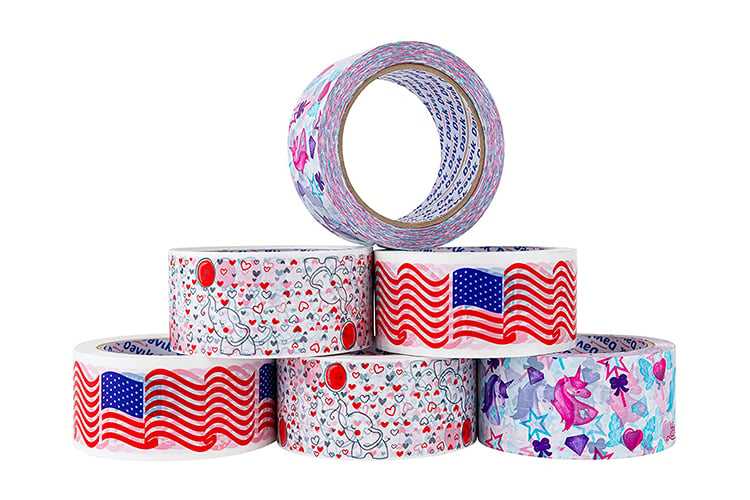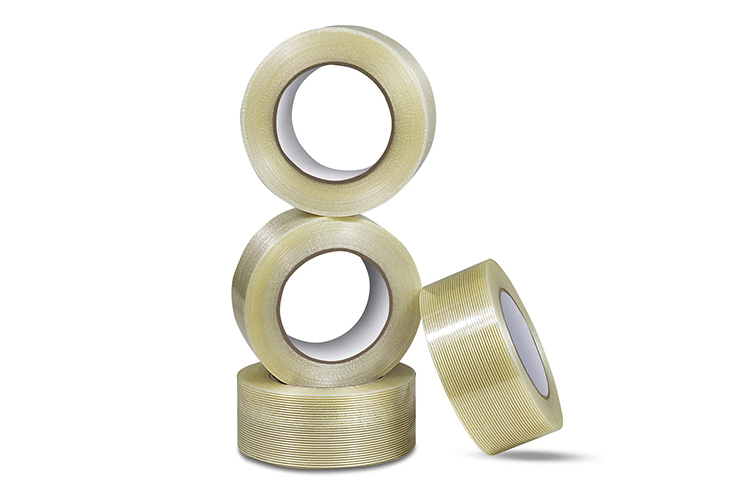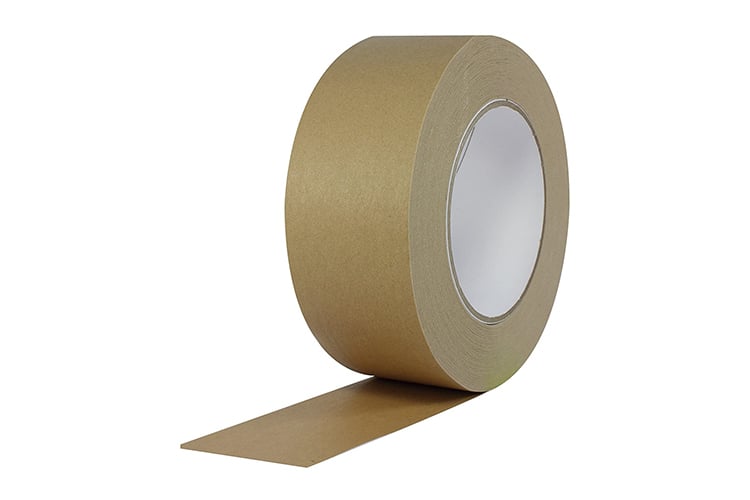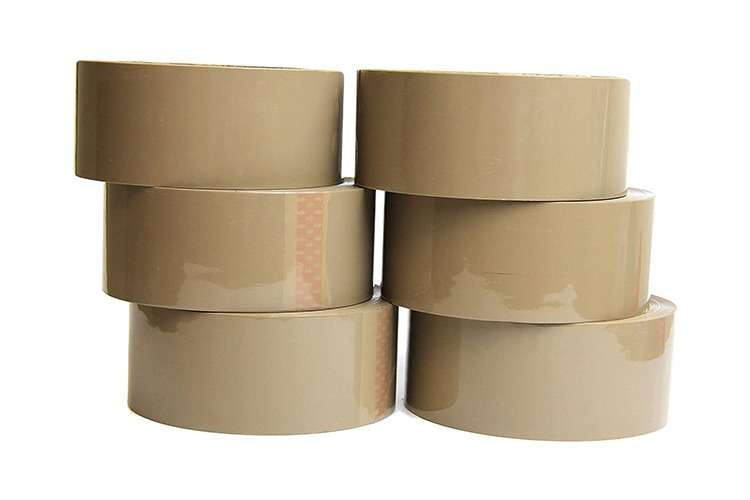Different Types of Packaging Tape

What Is A Packaging Tape?
Packaging tape (know more) is also known as brown scotch packing tape is a tape used by most industries to close and seal boxes for shipment. It has a pressure-sensitive coating on its polyester or polypropylene backing.
Packaging tapes differ from each other in so many ways. Although the brown or clear packaging tapes are more common, there are other options. Most of them are either two or three inches wide and are suitable for various applications.
https://www.youtube.com/watch?v=C6hTQE-J7rI&feature=youtu.be
Features of Packaging Tapes
There are certain features your packaging tape should have. These features make up a good packing tape: They are:
- Abrasion resistance:
Firstly, this has to do with how rugged the tape is. It is a measure of the scratch resistance of the tape.
- Peel strength:
Next up, this is the amount of force you will need to separate two surfaces bonded together by the tape.
- Permanence:
A packaging tape should be able to remain permanently bonded to the package once applied.
- Safety:
Safety tape and film products are often used as barricade tapes or for flagging. So, most safety applications use reflective tapes. Tapes that are multi-colored are more suitable for differentiating seams.
- Tensile strength:
This is the maximum load that the packing tape can withstand. The tensile strength of a brown packing tape may range from a couple of ounces to hundreds of pounds. It is the tensile strength that helps to keep items sealed.
- Temperature resistance:
It is the amount of heat the tape can withstand without compromising its performance. Packing tapes are not known to come with improved temperature properties. But packaging film has a molecular structure that can align and tighten when exposed to heat.
- Transparency:
Products that are transparent allow light transmission. The tape is transparent if you can easily read a 10-point type through the tape applied over it.
- Weather resistance:
Another feature your tape should have is weather resistance. This will make it suitable for outdoor use. It will also be resistant to heat, cold, UV light, water, and other conditions of the weather.
Different Types of Packaging Tapes
There are so many types of tapes available in the market nowadays. They have unique characteristics which make them suitable for different uses. You may need different brown packing tapes for storage, packaging, painting, or even construction industries.
Here are some of the more common types of packaging tapes:

Transparent cello tape or clear packing tape:
This traditional tape is generally known as the scotch packing tape. It is one of the most well-known tapes in the world. This tape is excellent for fastening and holding small-sized packages.
It is strong, durable, and comes with a glossy finish and a long-lasting bond. Demand for large quantities of this tape is very high as they usually help to protect labels.
Most of the packaging businesses use this tape for mailing bags, paper bags, and envelopes. People also use it to repair torn paper products, and for holding together light objects.
Filament tape (strapping tape):
Made of polyester, this tape is usually used and referred to the as strapping tape. It has fiberglass strands on both sides that do not stretch when used. For the easy application of this tape, you can use a filament hand parcel tape dispenser gun.
Kraft paper tape:
This brown tape has a design that blends very well with boxes. The adhesive used is very good for different applications. You can use your hand to tear this tape.
Low noise brown parcel tape:
This tape, with a measurement range of 50mm x 48mm, uses polypropylene as glue. The adhesive of this scotch packing tape works very well in cold temperatures. Thus, it is suitable for industries that package chilled food.
With this tape, the tensile strength of the packaging will increase. This will make it withstand any external pressure and vibration when in transit.
Masking packaging tape:
This packing tape is not recommended for shipping and packing of products. It is not very strong and is easy to remove without leaving any residue or tearing the packaging.
Pouch tape:
This non-toxic adhesive tape is for packing medical sterilized pouches. The adhesive is usually double-sided to improve the presentation and quicken the packaging process.
Printed tape:
This tape has prints on it that clearly display messages relating to the packaging. Printed fragile tape is good for customizing brand names and details. This tape can help to tell courier or customs officials to be careful with your package.
PVC packaging tape:
This is a high-quality, premium taping solution. It is a worthy investment because it provides strong support for all shipping needs.
Recycled tape:
This eco-friendly tape comes in both the invisible and transparent varieties. It uses plant-based adhesive and is not used for packaging heavy-duty items. You may use it for regular slotted containers that do not weigh more than 100 lbs.
Security tape:
This is often used as secondary packaging for nutritional and medicinal products. It provides a tamper-evident seal on containers.
Surface protection tape:
Products are prone to scratches, marks and other damages during shipping. Surface protection tapes or films offer temporary protection and are easy to remove. They are suitable for large furniture or appliances.
Vinyl cross-weave tape:
This is one of the strongest packing tapes that use very strong hot melt adhesives. Also, it can protect packages inside a package for a very long time. Products do not leak or waste with this kind of packaging.

How To Apply A Packaging Tape
The application of the tape is either done manually or automated.
- Manual application
To apply your packaging tape manually, you can use a stationary dispenser. Some people prefer to use hand-held tape dispenser. With the hand-held tape dispenser, it is easier to place the tape, cut off the excess, then rub it down.
A tape dispenser comes in different varieties like manual and heavy-duty. Furthermore, each dispenser differs in size, length, and weight.
- Automated application
This form of application is usually used when you need to apply the tape to high-speed lines.
Types of Adhesive Used in Packaging Tapes
Tapes are quite useless without a sticky backing, hence the need for an adhesive. It is important to know the different types of adhesive because not all stick to all surfaces. To use an adhesive, you have to get the one that best suits the specific need.
Here are the three main types of adhesives used for packaging tapes:
Natural rubber:
This is the most versatile adhesive of scotch packing tape because of its ability to adhere to almost any surface. When used on tapes, is easier to use than the others, but a little bit pricier.
Furthermore, natural rubber is an aggressive adhesive that best suits the following:
- problematic boxes with corrugated dust or high recycled content;
- irregular surfaces in both normal and cold temperatures;
Hot melt or heat-activated:
This adhesive tape is common for brown packing tapes. Also, it is very effective with a high initial tack around room temperature. You can use it for sealing boxes that have low recycled content.
Acrylic:
This packaging tape adhesive is more common and cheap. It works well in cold temperatures for sealing boxes that have low recycled content. This cost-cutting adhesive is suitable for packaging many products.
Non-adhesive:
There is no applied adhesive on laminates, films, and non-adhesive tapes. These tapes are self-adhering and need a high friction coefficient to stay adhered.
Pressure-sensitive:
These as contact adhesives work well at room temperature in a solvent-free or dry form. Furthermore, they need finger or hand pressure to adhere very well to many unrelated surfaces on contact. Also, their elastic nature and cohesive holding make them easy to use and remove by hand.
Pressure-sensitive adhesives do not leave any residue when removed from a smooth surface. Also, they exert strong adhesive force on materials like plastic wood, metal, and paper. They do not need water, heat, or solvent activation to be effective.
Silicone:
Silicone adhesives feature very high flexibility and temperature resistance (up to 600°F). The application of silicone is usually pressure-sensitive. Therefore, to cure, this adhesive may need ventilation, UV, or EB radiation.
Water-activated:
These tapes use glue or starch adhesives on reinforced paper carriers. To bond, you will have to moisten the tape. It then dries after its application to a hardened seal.

Uses of A Packaging Tape
The uses of packaging tape spread across many industries. Some of the uses are:
- Mailing:
The tape used here has to be removable. Also, you should use an 'H' pattern to apply it to boxes.
- Shipping:
Also uses removable tape and an 'H' pattern.
- Sealing of products:
Makes use of removable tapes and is applied using the 'H' pattern at the seams.
- Bundling tools and pipes:
This is usually done using strapping tape.
- Shrinkwrapping:
Moreover, you can shrink-wrap your items like food to isolate them from decay, water, or some other factor.
Pros of Using Packaging Tapes
The world will be a messy place without any packaging tape at all. Therefore, how else would you seal your boxes shut? Moreover, one cannot overemphasize the benefits of using scotch brown packing tape and other tapes.
Therefore, some of these benefits include:
- Firstly, in any form these tapes come, they can look like part of the package.
- Next, they are not easy to remove and show signs when someone tampers with them.
- Also, they help to keep the original characteristics of laboratory samples.
- So, transparent variety is useful in branding.
- Most tapes can adapt to all temperatures.
- Finally, they are usually long-lasting and resilient.
If you have any demand for custom personalized embroidered clothing labels, welcome to inquire us at Zigpac.





Validate your login
Sign In
Create New Account